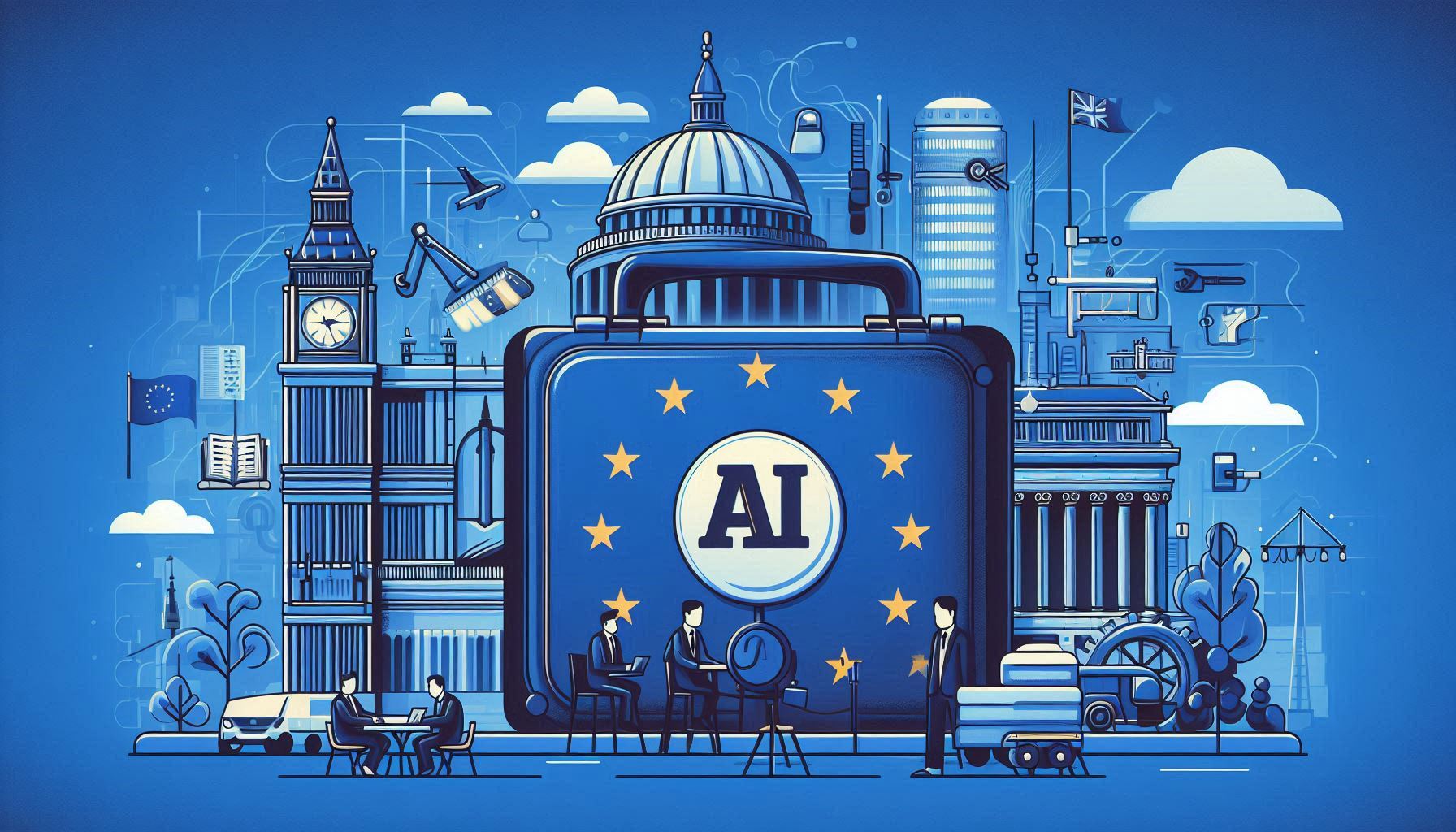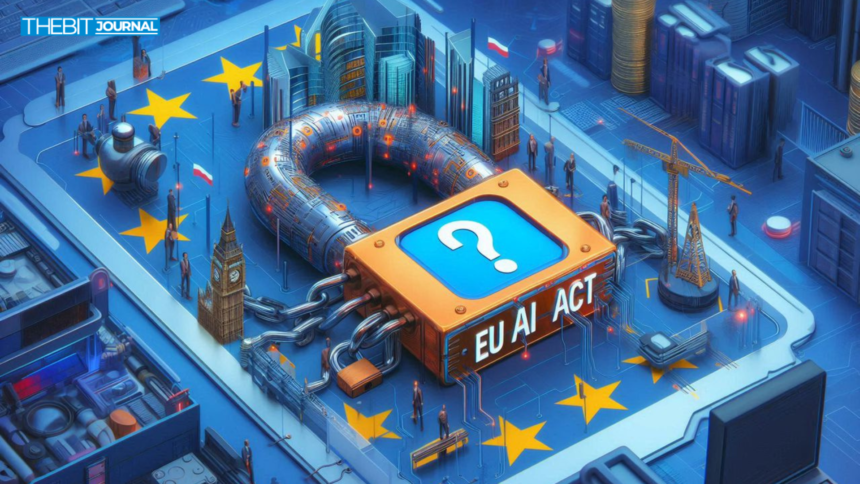According to reports, the European Union has made a key move to regulate artificial intelligence with the proposal of the EU AI Act, initiated to set the bar for artificial intelligence, improve AI literacy, and put limits on high-risk AI applications. Therefore, this regulation may be a way to provide equal grounds for AI governance. It has engendered significant debate among industry leaders, rights groups, and innovation advocates.
On one hand, human rights groups complain that it does not protect fundamental rights; on the other, business representatives believe it would hamper innovation with its strict requirements for compliance. The AI Act will create an unprecedented impact on startups and SMEs, introducing new compliance burdens, especially concerning high-risk AI systems.
Yet, with all the reported controversies, the EU still vows to advance responsible AI development while at the same time nurturing technological growth within the Union. But one question goes on: Will the EU AI Act safeguard ethical AI use without strangling Europe’s competitiveness in AI?
EU AI Act: Industry and Advocacy Groups at Odds
The European Artificial Intelligence Board, responsible for implementing the Act, allegedly, saluted the new rules as an essential step in AI governance. Similarly, other organizations, such as the European Grouping of Authors’ Societies and the Federation of European Publishers, have embraced the EU’s AI literacy and regulatory framework.
However, civil rights organizations, including Amnesty International, say the EU AI Act does not go far enough in protecting human rights, citing loopholes in enforcement mechanisms that could allow potential misuse of AI systems by governments and corporations.
Based on reports, leaders of industries in AI and advocates of innovation believe that this proposed Act over-regulates business factors which, without proper resources, startups and SMEs are unable to stand up against complex documentation, assessment, and other requirements of regulations.

Compliance Challenges for Startups and SMEs
The EU AI Act presents significant compliance challenges for startups and SMEs, especially on matters relating to risk assessment and technical documentation. The Act requires that companies developing high-risk AI systems should do the following:
- Conduct thorough risk assessments before deployment
- Maintain detailed technical documentation for compliance
- Ensure AI models are transparent and explainable, and invest in ongoing monitoring and evaluation.
All this translates to big financial and administrative costs, hence beyond the reach of small businesses that happen to have thin budget
“For smaller players, these administrative and financial burdens can be crippling, potentially discouraging them from adopting or developing AI technologies. This is particularly troubling because Europe already trails global competitors like the U.S. and China in AI innovation.” – Vladimir Lelicanin, CTO at HAL8 and Apex Fusion Key Contributor
With the Act attempting to give some regulatory clarity, critics maintain that its inflexible structure could inadvertently disadvantage European startups and shift innovation hubs to more AI-friendly jurisdictions.
Regulatory Sandboxes: A Potential Solution?
To mitigate some of the compliance challenges, the EU is considering regulatory sandboxes-a controlled environment in which businesses can test AI innovations under relaxed regulatory conditions. Such sandboxes aim to:
- Create a safe space where startups can experiment with AI models.
- Provide guidance on compliance while fostering innovation.
- Enable authorities to observe AI applications in real-world scenarios.
However, several industry players still question their effectiveness.
“Regulatory sandboxes can be a useful tool, but only if they remain agile and inclusive, particularly for SMEs. If bureaucratic red tape slows them down, they may replicate the very barriers they aim to dismantle.” – Vladimir Lelicanin
The specific EU Commission guidelines for AI sandboxes are expected to be released before August, but there is still concern over whether these will be truly relieving regulatory burdens or just adding another layer of complexity.
The Impact of the EU AI Act
The recently proposed EU AI Act has triggered a highly topical debate among senior practitioners, policymakers, and business executives alike. As much as this new regulation is likely to set a structured framework for the governance of AI, its real-world implications are debatable: some believe it will ensure more ethical AI behavior and further accountability, while others have sounded warnings of unintended consequences that could stifle innovation, especially among startups and SMEs. Below, a number of industry experts share their views on what the EU AI Act could mean.
Dr. Elena Fischer, AI Governance Researcher at the European Tech Institute: “The EU AI Act sets an important global precedent, but its success will depend on how effectively it is enforced. Without clear enforcement mechanisms, compliance may remain a costly challenge for SMEs.”
Industry experts have weighed in on the implications of the EU AI Act, highlighting both its potential benefits and the challenges it may introduce for businesses and AI developers.
Michael Anders, CEO of AI Startup NexusTech: “Startups need flexibility to innovate, and the AI Act’s stringent requirements might push them to relocate outside the EU. The introduction of regulatory sandboxes is a good initiative, but the details will determine their actual impact.”
Sophie Dubois, Senior Analyst at the AI Policy Council: “Balancing innovation with ethical AI governance is crucial. The AI Act addresses critical risks, but it must evolve to ensure it does not stifle progress in an industry that is still in rapid development.”

What’s Next for AI Regulation in Europe?
First, the EU AI Act is not a panacea but the beginning of a long-term strategy for AI governance, and its final form will be refined over time as technologies advance. Policymakers must make a careful balance between stimulating AI innovation and responsibly deploying AI.
As implementation gets under way, these questions remain:
- Will compliance costs drive AI startups out of Europe?
- Can regulatory sandboxes offer real relief to SMEs?
- How can the EU effectively enforce high-risk AI limits without undermining the competitiveness of the industry?
The answers to these questions will frame the direction of AI development in Europe and define whether the EU’s AI Act becomes the standard globally or a lesson to be learned from.
Conclusion: A Defining Moment for AI in Europe
The EU AI Act is considered a landmark law regulating AI developments based on ethical and safety concerns. At the same time, compliance with this act poses challenges largely affecting startups and SMEs, while regulatory sandboxes may still provide some forms of relief as far as implementations are concerned; this too shall be seen over time.
With Europe well on its way to positioning itself as a leader in AI governance, the challenge will be getting the right balance between regulation and innovation. If it succeeds, the EU AI Act could well become the global benchmark for AI legislation; if it becomes too restrictive, however, it runs the risk of driving AI entrepreneurs elsewhere.
The BIT Journal is available around the clock, providing you with updated information about the state of the crypto world. Follow us on Twitter and LinkedIn, and join our Telegram channel.
FAQs
1. What is the primary goal of the EU AI Act?
The Act aims to regulate AI applications, promote AI literacy, and prohibit high-risk AI systems that could harm individuals and society.
2. How does the EU AI Act impact startups and SMEs?
The Act introduces strict compliance requirements, such as risk assessments and technical documentation, which can be costly and complex for smaller businesses.
3. What are regulatory sandboxes, and how do they help AI businesses?
Regulatory sandboxes allow businesses to test AI systems in a controlled environment with relaxed regulations, providing guidance on compliance while fostering innovation.
4. What happens if a business does not comply with the EU AI Act?
Non-compliance can lead to penalties, restrictions on AI deployment, and legal repercussions under EU regulatory enforcement mechanisms.
Glossary
- Artificial Intelligence (AI): A branch of computer science that enables machines to simulate human intelligence, including learning, reasoning, and problem-solving.
- High-Risk AI Systems: AI applications identified under the EU AI Act as posing significant risks to health, safety, or fundamental rights, requiring strict regulatory compliance.
- Regulatory Sandboxes: Controlled environments where businesses can test AI applications with relaxed regulatory conditions before wider deployment.
- AI Literacy: The ability of individuals and organizations to understand and responsibly engage with AI technologies.
- Technical Documentation: Detailed records that AI developers must maintain to demonstrate compliance with regulatory requirements, particularly for high-risk systems.
- European Artificial Intelligence Board: A regulatory body overseeing the implementation and enforcement of the EU AI Act across member states.
- SMEs (Small and Medium-Sized Enterprises): Businesses with a limited workforce and revenue, often facing significant financial and administrative burdens when complying with complex regulations.


























